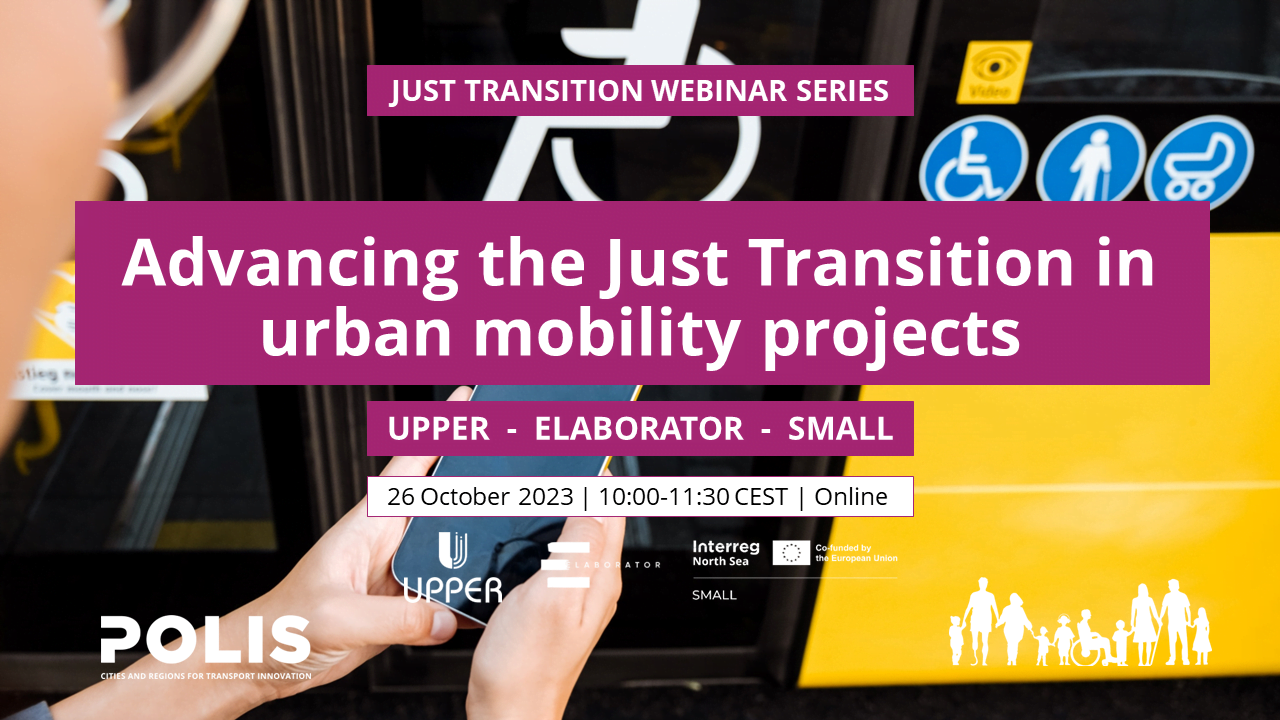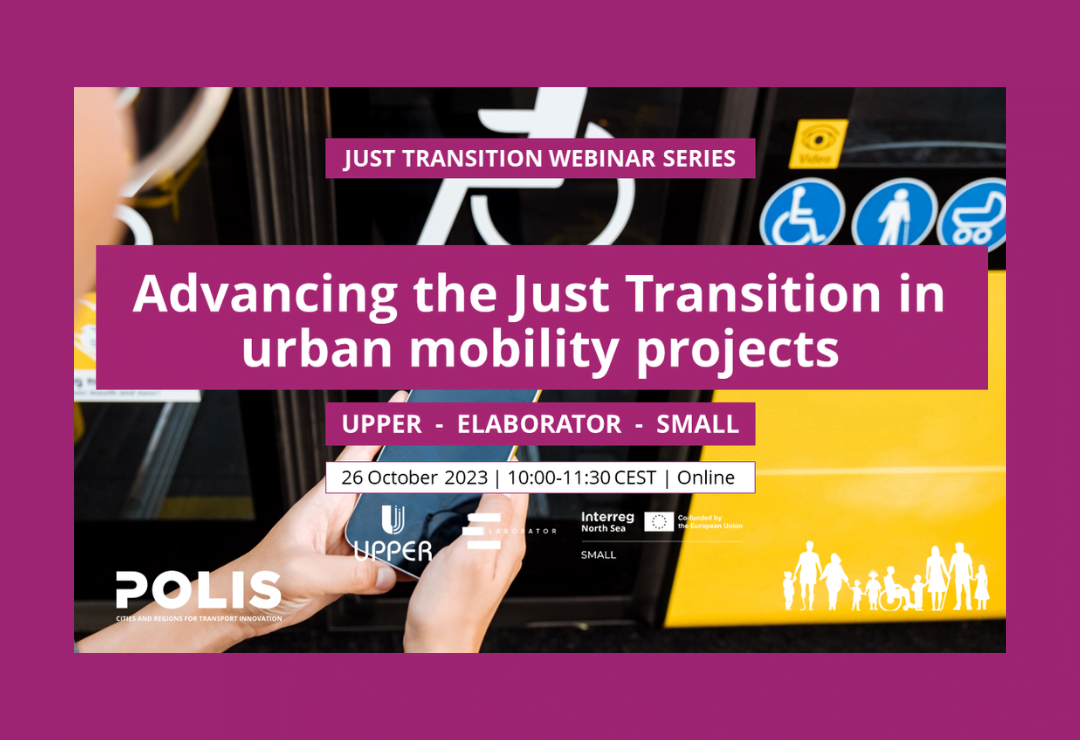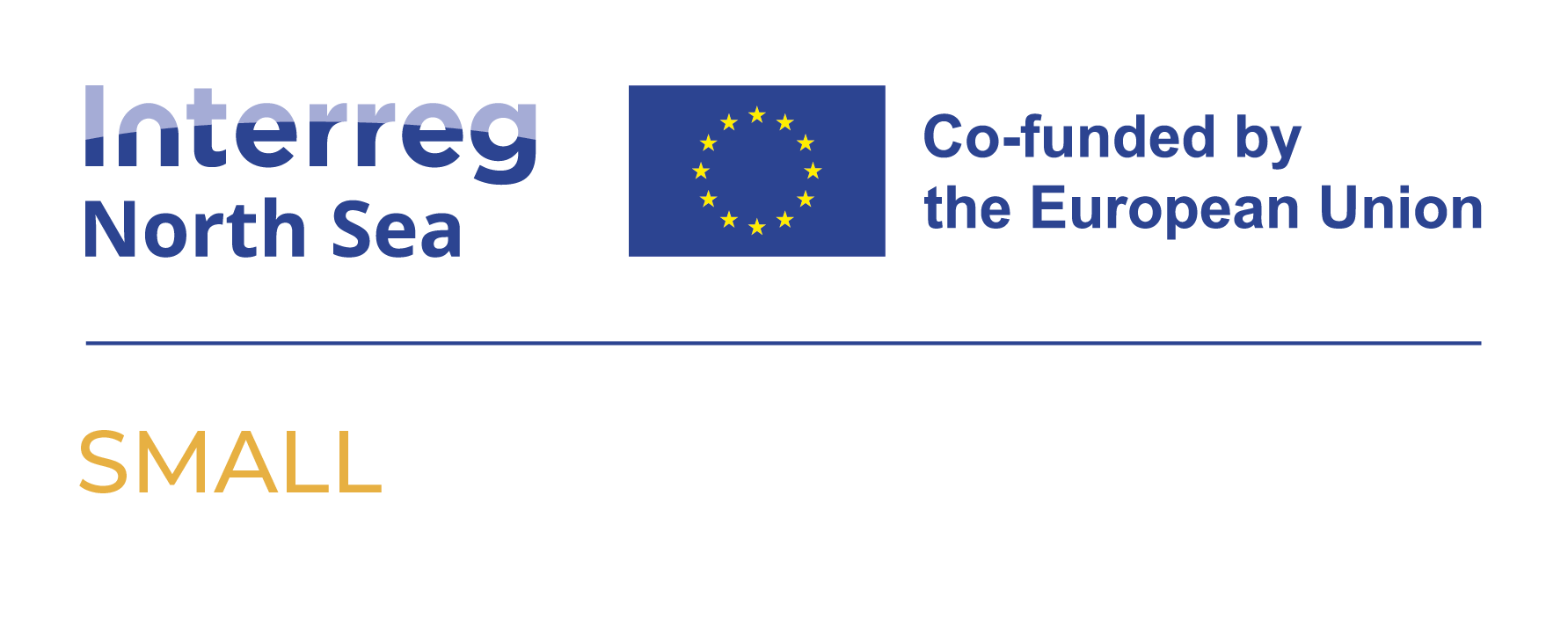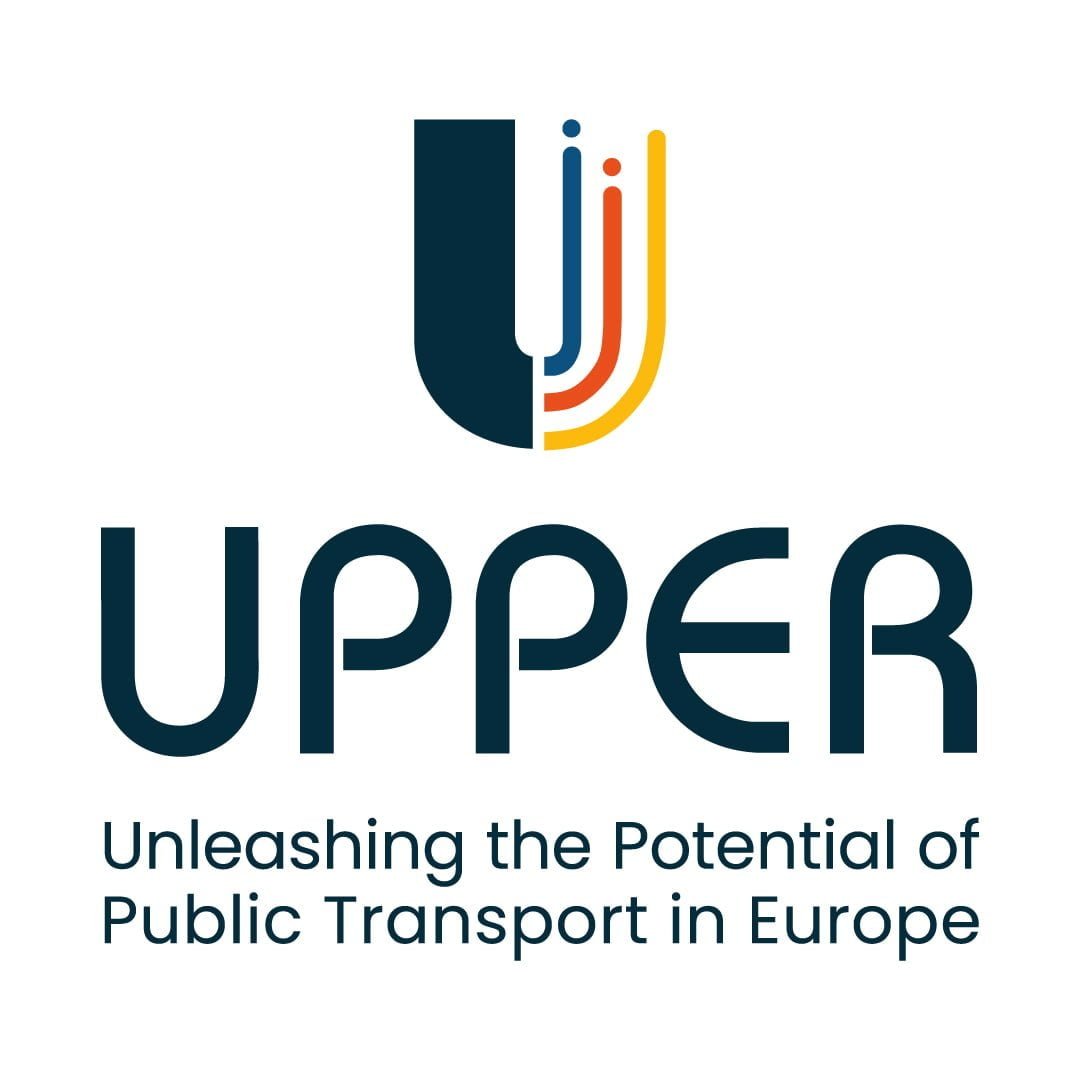Starting small, thinking big: The Just Transition is back in business!
On 26 October, POLIS’ Just Transition Webinar Series resumed, turning the spotlight on several EU funded projects to explore how accessibility and inclusion is being pioneered on the ground.
Creating more inclusive and accessible urban mobility is no mean feat. For decades, our cities and their transport systems have been designed around the needs and demands of a privileged few, the result? A network of services which excludes not a small minority of users, but huge swathes of the population.
It is time to get serious about change. However, transformations are often born from small interventions which think big. So where better to look for inspiration than innovative pilots which are putting cutting edge concepts into practice?
On 26 October, POLIS’ Just Transition Webinar Series resumed. This time the focus was on several EU funded projects, UPPER, ELABORATOR, and SMALL, all of whom are working towards mobility as a right, fostering inclusive public transport and shared mobility, and promoting safe and inclusive active mobility.
It was a lesson in putting policy into practice, exploring which spatial interventions are working, how co-creation with citizens can be enhanced, and how practitioners and policymakers can work together.
Why EU projects? Start small and build up!
Many cities and regions across Europe are engaged in a range of urban mobility research and innovation projects, serving as testbeds for new solutions to the age-old problem:
“How do we create mobility services which work for everyone?”
By partnering with knowledge institutes, networks, NGOs, and others, these projects allow local practitioners to ‘think outside the box’, developing pilots and tools which can then be transferred and scaled.
ELABORATOR: A truly bottom-up agenda
Terms such as “vulnerability”, “user needs” and “inclusion” are increasingly becoming part of the urban mobility lexicon. However, do we really know what we mean when deploying this language? And do we have a common understanding of these terms?
ELABORATOR aims to use a holistic approach for planning, designing, implementing and deploying specific innovations and interventions towards safe, inclusive and sustainable urban mobility, focusing first on the language we use.

“Transport and mobility have a direct impact on the quality of life in the city, and thus it must reflect the needs and demands of a wider variety of users,” said Eva Grigoriadou, Architect, Director at URBANA.
Here, an understanding of privilege and marginalisation is essential- and Grigoriadou walked us through how axes of identity shape ability- and inability- to access and benefit from urban mobility services.
“Taking a gender-lens helps us to explore this further,” noted Grigoriadou, “where we see caregiving and safety has not been placed at the forefront of planning, with devastating impacts on women, and minorities.”
Grigoriadou illustrated the ways urban planning, which has placed car travel at the centre of travel, has distinct gendered impacts, in their marginalisation of pedestrian transit and public transport use- where women make up a huge proportion of these groups.
“What is really critical in the ELABORATOR approach, is that all these actions will be co-created with citizens, policymakers and others,” said Grigoriadou.
“There is a danger in making assumptions about people and some groups, it is important to ask them and incorporate them is the first step.”
So, what is ELABORATOR doing? In developing a catalogue of terms to avoid using and words/phrases to be used instead, as well as guidelines and indicators, the project is aiding practitioners in understanding inclusivity and gender in urban planning, and applying this to different local contexts.
The project is also coordinating internal trainings for the partners to understand inclusivity and gender perspective in urban planning and mobility, and will organise participatory activities in the participating cities to better understand the diverse mobility needs of different social groups and integrate them in the proposed interventions.

Public transport built around people- UPPER’s approach
While cities have undoubtedly been built around the private car, it is our public transport systems which have shaped the face and popular imagination of the metropolis.
Public transport is also a vehicle for inclusion- and exclusion. While the car may have become associated with personal “freedom”, it is in fact public transport which is responsible for providing access to employment, education and healthcare, particularly for women- who account for over 50% of passengers- as well as more vulnerable user groups, for whom the car is an inaccessible and unaffordable alternative.
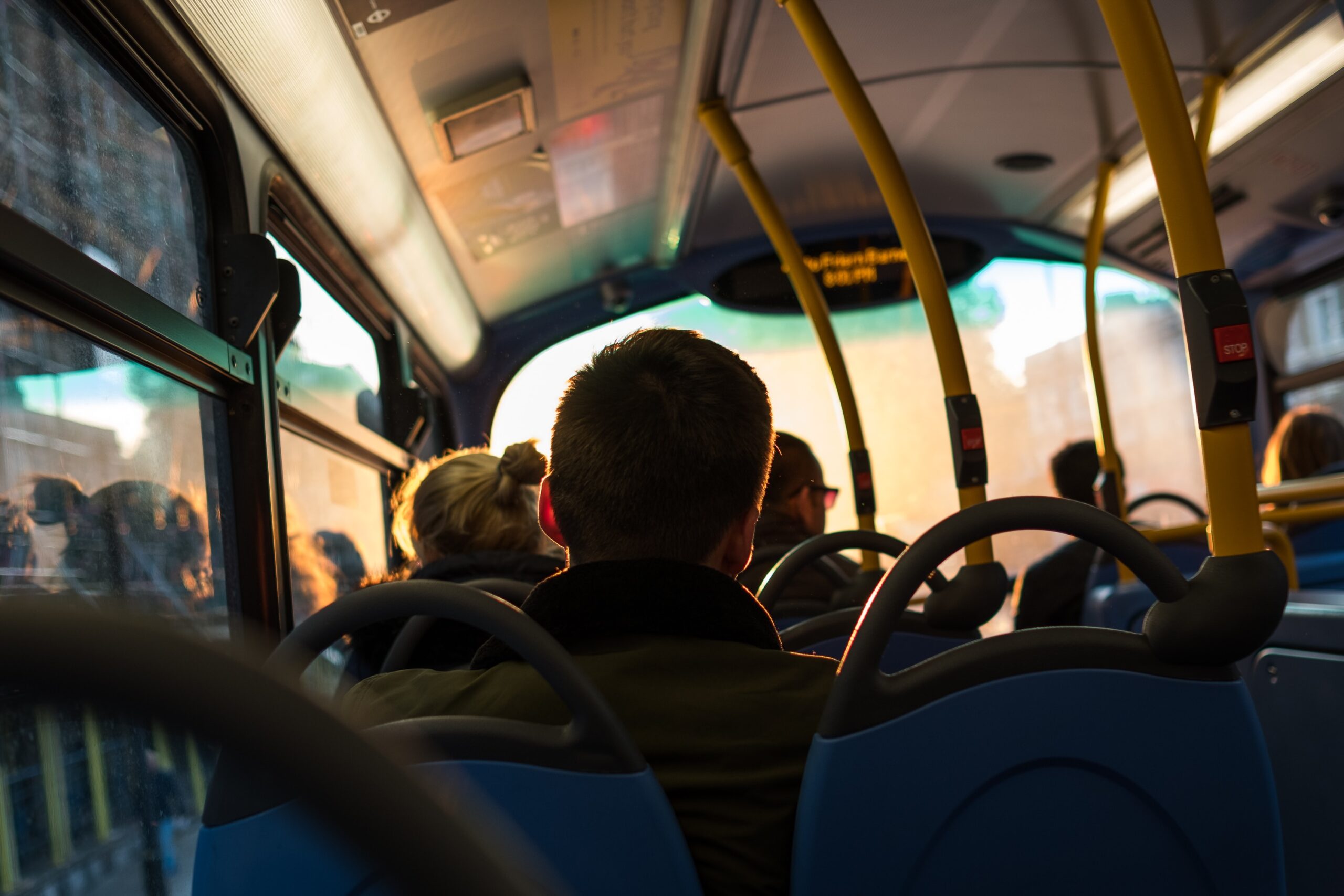
UPPER aims to strengthen the role of public transport as the cornerstone of sustainable and innovative mobility. The project will implement a combination of measures looking to push people out of private cars and to pull them closer to public transport in cities across Europe.
“The project is conducting cutting edge research on mobility user needs, motivations and patterns, thus enabling cities and regions to plan services in a targeted and effective way,” Said Mircea Steriu, UPPER Project Manager at UITP.
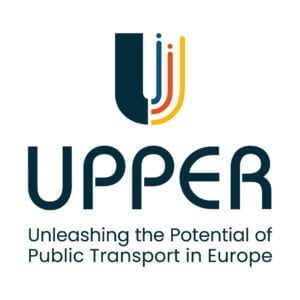 The research so far reveals the gender nature of mobility patterns, with women exhibiting a higher preference for the usage of public transportation and active mobility, compared to men, who rely more heavily on private transportation.
The research so far reveals the gender nature of mobility patterns, with women exhibiting a higher preference for the usage of public transportation and active mobility, compared to men, who rely more heavily on private transportation.
“We have found that the increase in the offer in peri-urban areas, the adaptation of bus-stops and stations, the availability of real-time data, prioritisation of public transport, economic incentives and balancing quality of service and satisfaction, are all avenues for making services more accessible and inclusive,” said Juan Fernando Gimenez Pla, Project Manager – Researcher at Instituto de Biomecánica de Valenci.
SMALL… but mighty intervention!
“When you think of shared mobility, who do you see?” Asked Esen Köse, Project Manager, at POLIS associate member, Mpact.
As shared mobility continues to develop and expand, this is a critical question facing policymakers, local authorities and indeed the sector itself. From VOI’s Parking Standard to Dott’s research on users, creating more inclusive services is an area which is attracting growing attention, yet, there remains growing confusion and lack of data on what exactly inclusivity means, and how it can be implemented on the ground.
SMALL explores how to make shared mobility accessible to children and families, the elderly and physically impaired people. The project is testing new shared mobility service with adapted vehicles, exploring how MaaS and other digital informative services can be better adapted to different user groups, and how to strengthen and further integrate voluntary services.
“We aim to create a new imagination of shared mobility, which encompasses and caters for diverse profiles,” asserted Kose.
 To test some of these approaches, SMALL is piloting shared mobility solutions in relation to two hospitals and two local stations in the Capital Region of Denmark.
To test some of these approaches, SMALL is piloting shared mobility solutions in relation to two hospitals and two local stations in the Capital Region of Denmark.
“The pilot is about improving accessibility and thus reducing private car trips,” said Kia Madsen, Consultant Green and Cohesive Mobility, Center for Regional Development – The Capital Region of Denmark.
The pilot will take place at Glostrup Hospital and Glostrup Station and Herlev Hospital and Herlev Station, connecting the public transport stations to the Hospital area. Here, depending on the needs of the relevant and selected user groups, different solutions and vehicles will be deployed and tested for a period of time.
Like ELABORATOR, Co-creation is at the heart of the SMALL project, and the webinar examined what exactly constitutes co-creation, and how it differs from user engagement.
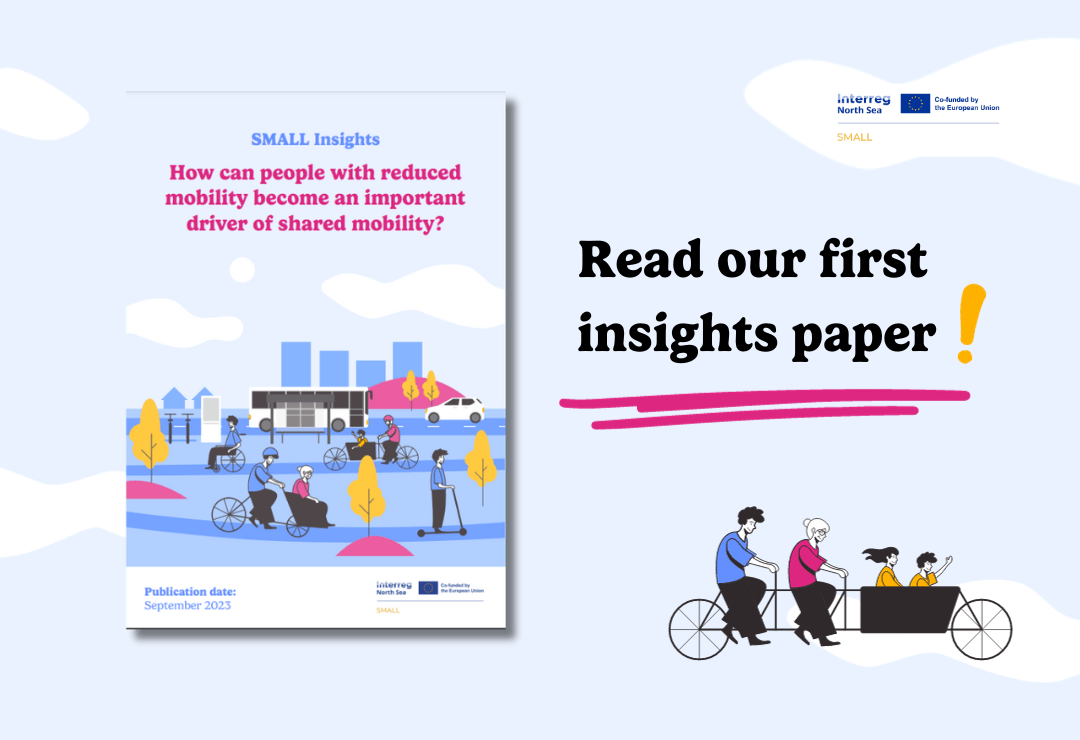
Madsen and Kose provided key insights into others seeking to engage in co-creative processes. Advice included:
- You will have a lot of interests from people, but a lack of time and resources to participate.
- Plan budget and resources for associations to engage with you.
- Start any workshop with something your target group is familiar with.
- Images are very powerful, come to your workshops with many ideas and suggestions.
- Smaller groups allow for more personal connection.
POLIS members can view the presentations HERE
